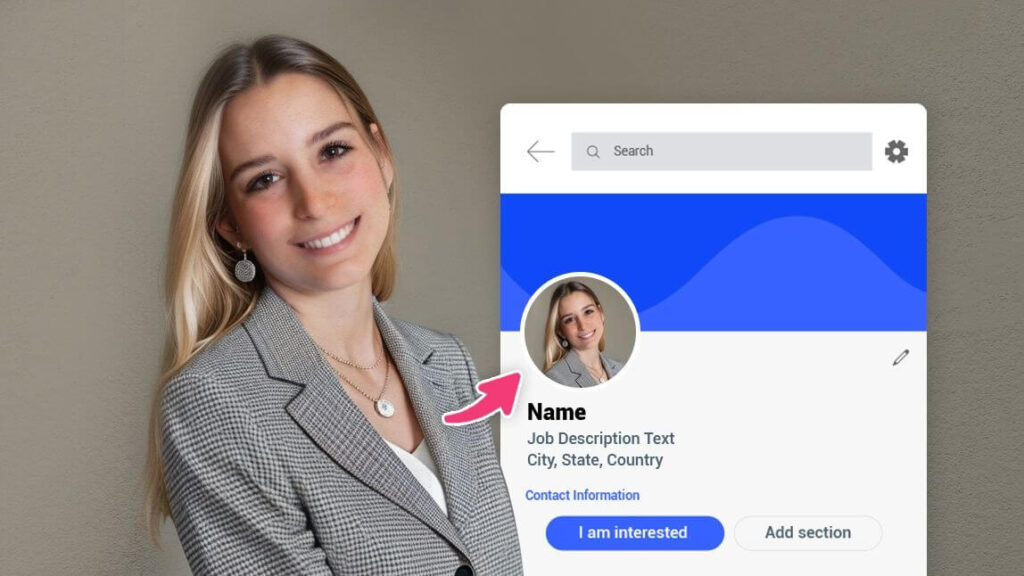Welcome to our free course on LinkedIn profile optimization. We will walk you through a number of planned steps in this program that are designed to improve your LinkedIn presence.
You will discover how to effectively present your abilities, experiences, and career goals to prospective employers and industry contacts by putting the tactics taught in this course into practice. Together, let us start exploring the possibilities of your LinkedIn profile.
Creating a strong introduction that highlights your experiences, abilities, and career goals is essential to optimizing your LinkedIn profile and making it stand out to connections and employers.
You can build a strong online presence that draws attention and creates new opportunities for your career by carefully emphasizing your accomplishments, using industry-relevant keywords, and interacting with your network.
The following actions are important to remember in order to maximize your linkdin profile & Get high ticket Clients:
1. Profile picture:

The first step in optimizing your LinkedIn profile is to write a catchy summary that captures your experience, qualifications, and career goals in a concise manner.
Start by giving a brief synopsis of your professional background that highlights your most significant accomplishments and areas of expertise. Use industry-specific keywords in your summary to increase visibility and relevance while also tailoring it to your intended audience.
Make a point of highlighting your special selling point and what makes you stand out from the competition in your industry. Strive to grab the reader’s interest and encourage them to explore your profile further by maintaining a professional yet conversational tone.
To ensure readability and clarity, arrange information in brief paragraphs or bullet points. In the end, a polished synopsis functions as your online elevator pitch, making a lasting impression on profile viewers and tempting them to discover more about your experience and qualifications.
2. Education:

Making the most of your LinkedIn profile’s education section is essential for highlighting your academic credentials and accomplishments. Commence by enumerating your greatest educational attainment, encompassing degrees, certifications, and pertinent courses.
Do not forget to include information about the school, degree obtained, subject of study, and graduation year. In addition, think about including any extracurricular activities, honors, or awards from your education that attest to your commitment to and proficiency in your field.
Use the description section to outline the background of your education and to highlight any noteworthy projects, studies, or abilities you have acquired while pursuing your degree.
You may draw in recruiters and peers in your field by skillfully showcasing your educational background and establishing yourself as an informed and competent professional.
3. Recommendations:

Getting recommendation from coworkers, managers, or clients who can attest to your abilities and work ethic is a crucial part of making the most out of your LinkedIn profile.
Make a conscious effort to get recommendations from people who can give you insightful feedback on your accomplishments and areas of strength. When requesting recommendations, include a personal note explaining why you would value their recommendation.
In order to promote a culture of professional growth and mutual support, you should also return the favor by offering to write recommendations for other people in your network.
These endorsements function as potent testimonials that vouch for your experience and reliability to contacts and employers, increasing the overall influence and efficacy of your profile in drawing in new business.
4. Visibility:

Visibility is the first step towards optimizing your LinkedIn profile. To begin with, make sure your profile is set to “Public” so that recruiters, prospective employers, and colleagues in the industry can find it. To facilitate people’s search engine discovery, personalize your LinkedIn URL with your name or professional title.
To increase your visibility in search results, use pertinent keywords throughout your profile, particularly in the sections dedicated to your experience, summary, and headline.
Participate in industry discussions, share thought-provoking content, and establish connections with experts in your field to interact with your network.
Keep your profile up to date by adding new experiences, abilities, and accomplishments to stay visible in your network’s feed and stay relevant. Prioritizing visibility on LinkedIn will help you reach a wider audience and create more networking and career growth opportunities.
5. Experience:

To properly highlight your career journey, it is imperative that you optimize the experience section of your LinkedIn profile. Start by giving thorough descriptions of your prior positions, highlighting your most significant achievements and duties.
To show concrete outcomes, use language that is action-oriented and, if at all possible, quantify your accomplishments. To engage viewers and add more context, think about including multimedia components like project samples, presentations, or videos.
Make sure that the interests of your target audience and your career goals are reflected in the experience section. In order to keep your profile looking polished and professional, make sure that the formatting and structure are consistent.
You can effectively draw attention to your expertise and draw in contacts in the industry and potential employers by making the most out of your experience section.
6. Skills:

The first step in optimizing your LinkedIn profile is to carefully highlight your skills. Start by deciding which skills are most pertinent to your expertise and professional goals. Make sure your abilities and experience in your industry are appropriately reflected in these skills.
You can list up to 50 skills on LinkedIn, but it is important to focus on quality rather than quantity. Think about the abilities that set you apart from other members of your industry and that are in great demand within your field.
Furthermore, get recommendations from coworkers, managers, or customers to certify your expertise in these areas.
Review and update your skill set on a regular basis to take into account any new abilities or professional advancements. Through skill-specific emphasis on your LinkedIn profile, you can draw in more attention from recruiters, employers, and networking contacts.
7. Engagement:

Getting the most out of your LinkedIn profile requires engagement. Taking an active role in your network by sharing, liking, and commenting on pertinent content shows that you are aware of current business trends and helps you build relationships with colleagues and possible employers.
Engaging in conversations and making perceptive remarks can help you become more visible and establish yourself as a respected authority in your industry.
You can network with like-minded professionals and learn a lot by joining and participating in LinkedIn groups relevant to your industry.
Engaging with your network and sharing relevant content on a regular basis will help you build credibility, improve your online presence, and draw opportunities that complement your professional objectives.
Conclusion
In conclusion, optimizing your LinkedIn profile is essential for effectively showcasing your professional identity and advancing your career.
By following the strategies outlined in this course, including crafting a compelling headline, summary, and experience sections, selecting appropriate profile and banner images, and engaging actively with your network, you can enhance your online presence and attract relevant opportunities.
Remember to regularly update your profile with new accomplishments and skills to maintain relevance and visibility. With a well- optimized LinkedIn profile, you can expand your network, establish your expertise, and unlock new possibilities in your professional journey.
FAQ (frequently asked questions)
1. What is the ideal length for a LinkedIn headline?
A: Your LinkedIn headline should ideally be around 120 characters or less. This concise space should effectively summarize your professional identity and value proposition.
2. How can I make my LinkedIn summary stand out?
A: To make your LinkedIn summary stand out, focus on highlighting your unique experiences, skills, and achievements. Use keywords relevant to your industry, and consider incorporating multimedia elements such as videos or presentations to showcase your work.
3. Should I include all of my work experiences on my LinkedIn profile?
A: While it’s essential to include relevant work experiences on your LinkedIn profile, prioritize listing positions that align with your current career goals and aspirations. Highlight achievements and responsibilities that demonstrate your expertise and value to potential employers or connections.
4. Is it necessary to include a profile picture on LinkedIn?
A: Yes, including a professional profile picture on LinkedIn is highly recommended. Profiles with a photo are more likely to attract attention and engagement than those without. Choose a high-quality image that presents you in a professional manner.
5. How often should I update my LinkedIn profile?
A: It’s advisable to update your LinkedIn profile regularly to reflect any changes in your career, skills, or accomplishments. Aim to review and update your profile at least once every few months to ensure it remains current and showcases your latest achievements.


